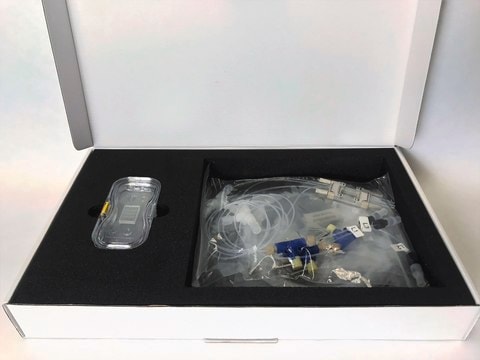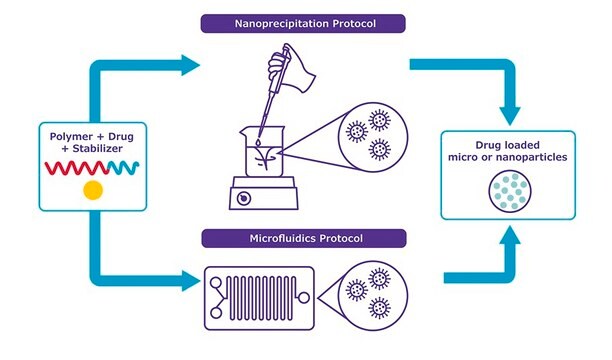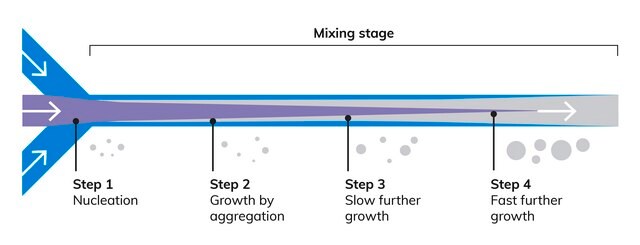Wichtige Dokumente
920436
NanoFabTx™ PEG-PLA drug formulation screening kit
for synthesis of PEGylated nanoparticles
Synonym(e):
Microfluidics, NanoFabTx™ reagent kit, Nanoformulation, Nanoparticle kit, PEG-PLA
About This Item
Empfohlene Produkte
Beschreibung
Kit components :
PEGPLA-L-M (919942-500mg)
PEGPLA-H-M (919934-500mg)
Stabilizer-Nano (907766-5g)
PEG-PLA drug formulation screening kit, for synthesis of PEGylated PLA nanoparticles
Qualitätsniveau
Anwendung(en)
advanced drug delivery
Lagertemp.
2-8°C
Allgemeine Beschreibung
- A Nanoprecipitation protocol to prepare drug-encapsulated nanoparticles in standard laboratory glassware.
- A Microfluidics protocol using commercial platforms or syringe pumps.
Anwendung
Leistungsmerkmale und Vorteile
- Includes tested protocols with step-by-step instructions for nanoprecipitation or microfluidics-based syntheses
- Requires minimal laboratory setup
- Optimized to achieve monodisperse, homogenously shaped, biodegradable, PEGylated PLA nanoparticles in any size between 60 and 100 nm
- Formulated to maximize the encapsulation of hydrophobic drugs
- Includes two different PEGylated PLAs
Rechtliche Hinweise
Ähnliches Produkt
Lagerklassenschlüssel
10 - Combustible liquids
Hier finden Sie alle aktuellen Versionen:
Analysenzertifikate (COA)
It looks like we've run into a problem, but you can still download Certificates of Analysis from our Dokumente section.
Wenn Sie Hilfe benötigen, wenden Sie sich bitte an Kundensupport
Besitzen Sie dieses Produkt bereits?
In der Dokumentenbibliothek finden Sie die Dokumentation zu den Produkten, die Sie kürzlich erworben haben.
Artikel
Professor Robert K. Prud’homme introduces flash nanoprecipitation (FNP) for nanoparticle fabrication, which is a scalable, rapid mixing process for nanoparticle formulations.
Unser Team von Wissenschaftlern verfügt über Erfahrung in allen Forschungsbereichen einschließlich Life Science, Materialwissenschaften, chemischer Synthese, Chromatographie, Analytik und vielen mehr..
Setzen Sie sich mit dem technischen Dienst in Verbindung.





